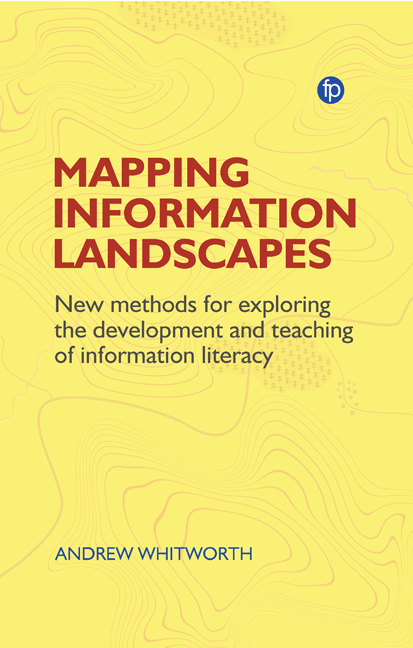 Mapping Information Landscapes
Mapping Information Landscapes Book contents
6 - Discursive Mapping of an Information Landscape
Published online by Cambridge University Press: 23 July 2020
Summary
Introduction
The previous chapter focused on learners creating graphical maps of information landscapes, whether individually or collectively. But the value of this to the learners was seen as much in the mapping as the maps; the process, as much as the product. The discussions so far have suggested that mapping has value in learning to use, nurture and steward information landscapes because it is a means by which representations of relationships between relevant landscape elements can be developed, communicated and scrutinised within communities. It has already been suggested that these processes do not have to result in the production of some kind of cartograph or other graphical map (like a concept map) for mapping to nevertheless be occurring – and, therefore, for these kinds of representational and communicative processes to still be taking place.
The aim of this chapter is therefore to look more specifically at the practices involved in discursive mapping and how these are manifested in dialogue between learners; an outcome of which is a more effectively, or at least differently, organised information landscape. Two key themes underpin this discussion. The first is how a learning environment, designed around the principles of informed learning (Bruce, 2008) and incorporating techniques and supporting technologies that promote the discursive mapping of an information landscape and the modelling of good practices, can build and validate the information literacy of small groups of learners in an HE setting. According to Bruce et al. (2017), effective design for informed learning has three key principles:
It takes into account learners’ existing experiences of informed learning, using reflection to enhance awareness;
It promotes simultaneous learning about disciplinary content and the information using process;
It brings about changes in learners’ experience of information use and of the subject being learned.
Chapter 4 was based around a real but wholly informal ‘educational’ situation. In Chapter 5 the focus was on either workplace learning and/or the use of mapping to generate data for academic researchers. In this chapter, the IL intervention being discussed is a formal one, part of an organised programme of study. This formalisation adds elements of power and authority that must also be discussed: this being the second key theme of the chapter.
- Type
- Chapter
- Information
- Mapping Information LandscapesNew Methods for Exploring the Development and Teaching of Information Literacy, pp. 133 - 166Publisher: FacetPrint publication year: 2020


